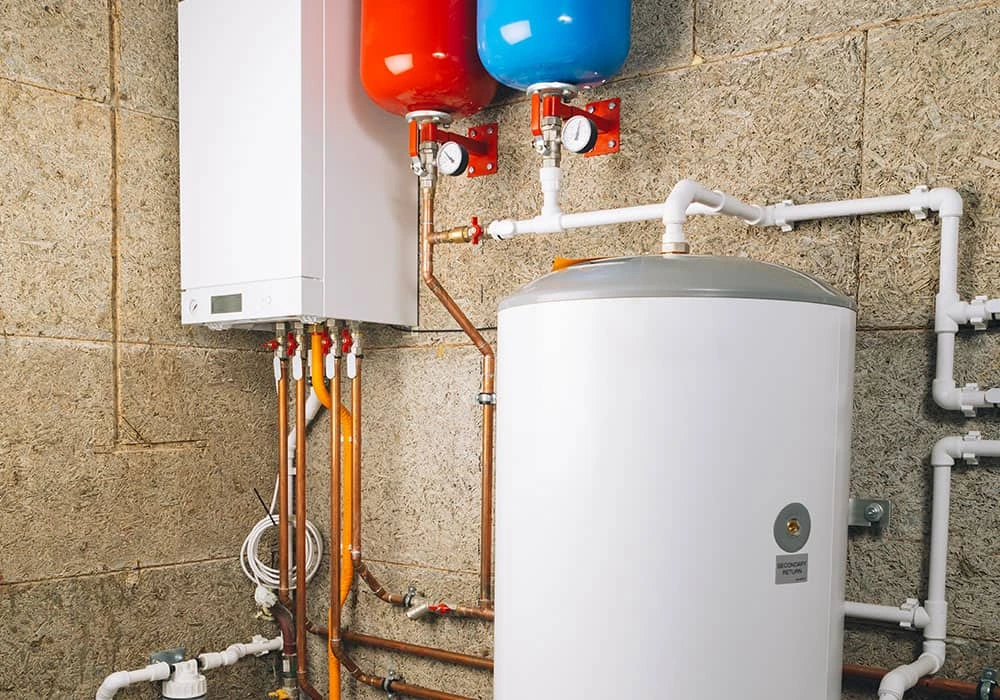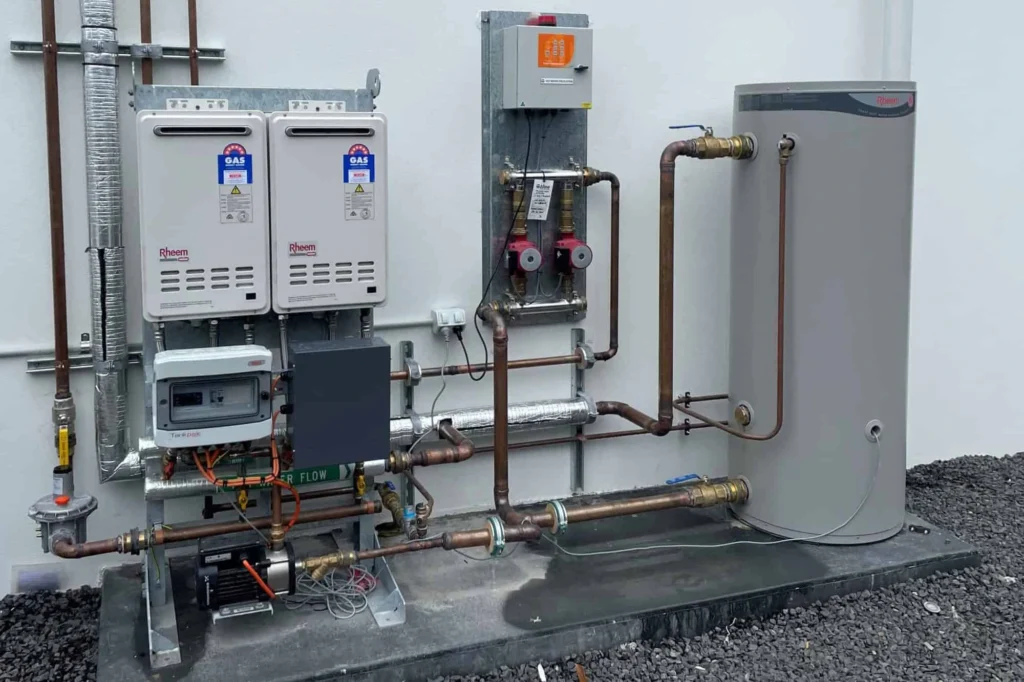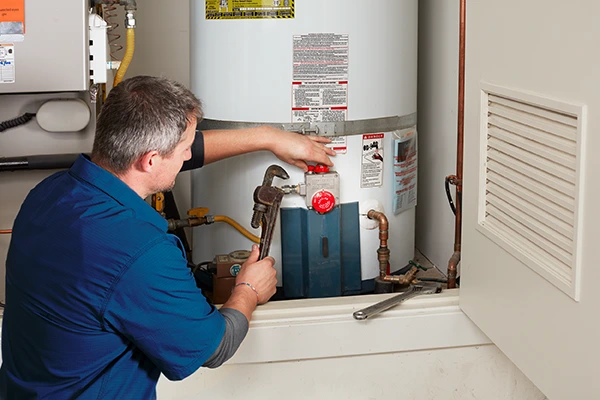Ever been stranded mid-shower in Orange, waiting for the hot tap that never comes? You twist the handle further, hoping for a miracle, but all you get is a splash of cold disappointment. If you’ve lived here long enough, chances are you’ve had some run-ins with temperamental water heaters. In this situation, it’s tempting to call a plumber straight away – but you may not have to. Many hot water headaches can be eased with a few simple DIY fixes.
Hot Water Systems in Orange face unique challenges—from fluctuating seasonal temperatures to older plumbing setups in rural and heritage homes. While it’s easy to assume the entire unit needs replacing, that’s rarely the first (or most cost-effective) solution. In fact, home improvement experts note that when a water heater isn’t heating, “the repair might be as simple as adjusting a setting, pressing a reset button, or clearing sediment buildup.”
This guide walks Orange homeowners through the most common hot water system issues and how to troubleshoot them, step by step. Whether your system is electric, gas, or solar-boosted, we’ll cover practical fixes you can try before picking up the phone. Let’s keep those showers hot and your wallet happy without rushing to replace the whole system.

Common Problems with Hot Water Systems in Orange—and How to Fix Them Fast
- No hot water at all: First, check the power. A tripped breaker or blown fuse often cuts power to the unit. Flip the circuit breaker for the hot water to OFF and then back ON. Then open the heater’s access panel and press the little red “reset” button (high-temperature cutoff) on the thermostat assembly. Sometimes this alone restores heating.
- Water is lukewarm or runs out fast: Sediment collecting in the tank can create a layer of insulating gunk. Flush the tank – turn off power and water, attach a hose to the drain valve, open the valve and let all water and sediment flow out. Then refill and restart the heater. (This will also quiet any rumbling noises.)
- Water too hot: The thermostat settings may be cranked too high. In most systems the ideal is about 50°C (120°F). Turn off power, remove the access cover, and use a screwdriver to lower the temperature on both upper and lower thermostats. Don’t forget to put the cover back on before re-powering.
- Puddles or dripping: Look for leaks at the inlet/outlet pipes and valves. Often it’s just a loose fitting. Tighten any nuts or threaded valves with a wrench – this usually stops minor drips. If the leak is coming from the temperature-pressure relief (T&P) valve or its discharge pipe, the valve itself may need replacing. A leaking T&P valve can often be replaced as a DIY job, but take care to fully drain and depressurise the tank first.
- Weak hot water flow: If hot water volume is low but the water is still hot, a failing heating element or cross-connection may be to blame. A bad heating element means the hot side runs out quickly. Replacing a heating element isn’t an easy DIY task, so if one element is bad you may need professional help (or full heater replacement). Also check that no cold tap is accidentally open (mixing cool water).
- Rusty or smelly water: Brown or yellow water indicates corrosion inside the tank. Water that smells like rotten eggs hints at bacteria growth or a spent anode rod. Flushing the tank can help temporarily, but you may need to replace the sacrificial anode rod (a cheap fix a plumber can do). If the tank itself is heavily corroded, plan on a replacement before it bursts.
These quick checks cover most minor hot-water system hiccups. The table below summarises key issues and fixes:
| Issue | Signs | Quick Fix / Action |
| Tripped Power/Breaker | No hot water at all | Reset the breaker (off→on) and push the reset button. |
| Faulty Thermostat | Water scalding or only lukewarm | Turn off power, adjust thermostat dials to ~50°C. |
| Sediment Buildup | Gurgling/popping noises; hot water runs out | Flush tank: drain all water and sediment. |
| Leaking Valves/Pipes | Water dripping near heater connections | Tighten or replace loose valves. |
| Faulty Heating Element | Water runs out quickly (even when hot) | Replace heating element (usually call pro). |
| Tank Corrosion | Rusty or foul-smelling water; side leaks | Drain & check anode rod; replace tank if corroded. |
| Faulty T&P Valve | Water dripping from side relief pipe | Replace relief valve; always use new Teflon tape on threads. |
A typical hot-water plumbing setup with inlet/outlet valves. Tightening loose valve fittings often stops leaks around a heater. Replacing a faulty relief valve or anode rod can also save your tank.
With the basics covered, let’s dive a bit deeper:
- Power and Controls: If flipping the breaker and reset switch didn’t do the trick, inspect the thermostat and limit switches. The Spruce guide warns that a heater not heating “might not be getting power, it could have a tripped limit switch, or one or more heating elements have failed”. Resetting the high-limit switch (that red button) can often help. If the water is excessively hot or cold and the thermostat seems faulty, adjustment or replacement is the remedy. Just remember: always cut power at the breaker before poking around inside the panel.
- Flushing the Tank: Even if your water is hot, sediment can limit your supply and make noises. As Spruce explains, rumbling or popping often means “the water in the tank is boiling” on top of the sediment layer. To clear it, turn off power/water, hook a hose to the drain valve, open the hot side (T&P) valve and let it all drain. This scares off rust and scale. After draining, close the valves and refill the tank. A good flush every year or two will keep your system quieter and more efficient.
- Valves and Pipes: Small leaks are usually plumbing fittings rather than the tank itself. Inspect where the cold-water inlet and hot-water outlet pipes connect to the tank. These joints can loosen or the rubber sealing washers can fail. Snug any loose nuts with an adjustable spanner – you’ll often stop a leak immediately. If the tank’s pressure relief valve is dripping, it’s often safest to replace it. That involves turning off water, draining a bit, unscrewing the old valve, and installing a new one with Teflon tape on the threads. It’s a quick job and avoids dangerous over-pressure.
- Corrosion and Anode Rod: One telltale sign of a deteriorating heater is rust-coloured or foul-smelling hot water. Spruce notes brown water means “the tank may be internally corroded”. In many mains-pressure systems, a replaceable anode rod protects the steel tank from rust. Replacing this rod (usually a cheap DIY part) can often restore the water quality. However, if the tank itself is rotting (leaking from the sides or bottom), there’s no fix except getting a new unit.

Should You Fix Your Hot Water System in Orange Yourself or Call a Pro?
Many issues with Hot Water Systems in Orange are well within a handy homeowner’s capabilities. Simple tasks like resetting breakers, adjusting thermostats, flushing sediment, or tightening valves are often safe and effective DIY options. In fact, “the repair might be as simple as adjusting a setting, pressing a reset button, or clearing sediment.”
However, it’s important to exercise caution around electricity and gas. Always turn off power before inspecting an electric heater, and never attempt repairs on a gas system unless you’re a licensed gasfitter.
Call a professional plumber in Orange if:
- You suspect a faulty heating element and still have no hot water after basic resets.
- The hot water tank is leaking from the shell—this usually indicates internal corrosion beyond repair.
- You’re using a gas-powered system and experiencing issues like a failed pilot light—licensed expertise is required.
- You’re unsure of the problem or uncomfortable handling components.
For Hot Water Systems in Orange, minor fixes can often save hundreds. Spending a little on parts like thermostats or relief valves can bring new life to your current system. Electric tank-style heaters typically last 10–15 years, so if yours is relatively new, a repair might be your best option. But if your unit is over a decade old and showing signs of serious wear, it might be more cost-effective to replace it.
Finding Help in Orange
If you prefer professional help, look for plumbers in Orange who specialize in hot water systems. Check that they are licensed (e.g. Master Plumbers NT or equivalent NSW licensing) and have good reviews from local customers. Many hot-water service companies advertise “Orange hot water repair” or “emergency hot water repair” – these often mean they’ll come same-day if you’re without hot water. Make sure any quote is clear: ask whether it covers labor and parts, and insist on branded replacement parts (Rheem, Dux, Rinnai, etc.) if needed. Ultimately, a trustworthy local plumber is worth having on speed-dial for plumbing maintenance and emergencies.
How to Keep Your Hot Water System Running Without Replacing It
Maintaining your hot water system in Orange doesn’t necessarily mean replacing it. Many common issues—such as lukewarm water, unusual noises, or minor leaks—can often be resolved through straightforward troubleshooting and regular maintenance. By flushing out sediment, adjusting thermostat settings, or tightening a valve, you can significantly enhance your hot water system’s performance and extend its lifespan.
Proactive maintenance is key. Addressing minor problems promptly can prevent costly repairs or replacements down the line. However, if a task feels beyond your comfort zone, don’t hesitate to consult a qualified local plumber in Orange.
For additional guidance on maintaining and upgrading your hot water system, refer to the NSW Government’s official resource: Upgrade your hot water system. This site offers valuable information on energy-saving upgrades and maintenance tips to keep your system running efficiently.
FAQs
How much does repairing a hot water system cost?
Repairs vary by issue, but they’re generally far cheaper than replacement. Tightening a valve or resetting a switch costs little or nothing. Replacing a thermostat, heating element or valve might run a few hundred dollars (parts + labour), whereas a full tank replacement can be $2,000–$3,000 or more. Get a quote from your plumber to compare repair vs replacement costs.
How much does repairing a hot water system cost?
Repairs vary by issue, but they’re generally far cheaper than replacement. Tightening a valve or resetting a switch costs little or nothing. Replacing a thermostat, heating element or valve might run a few hundred dollars (parts + labour), whereas a full tank replacement can be $2,000–$3,000 or more. Get a quote from your plumber to compare repair vs replacement costs.
How long should a hot water system last?
Most conventional electric tank-style hot water systems last around 10–15 years, while gas units average 8–12 years. Factors like water quality (hard water), maintenance frequency, and usage volume affect lifespan. Keeping the tank flushed and replacing the anode rod can extend its life. Once it’s past its expected lifespan or has major corrosion, replacement is usually the wiser option.

